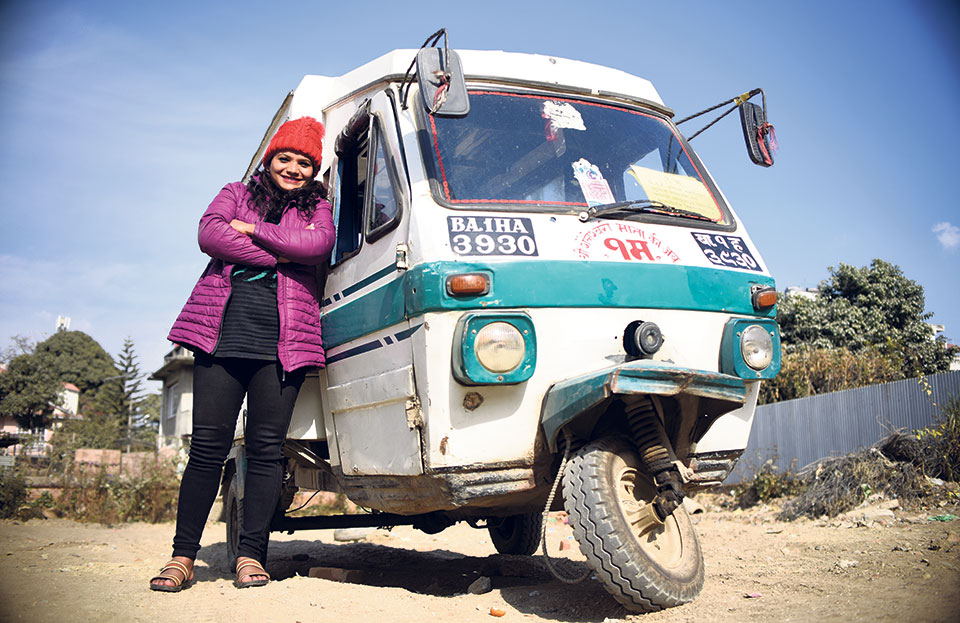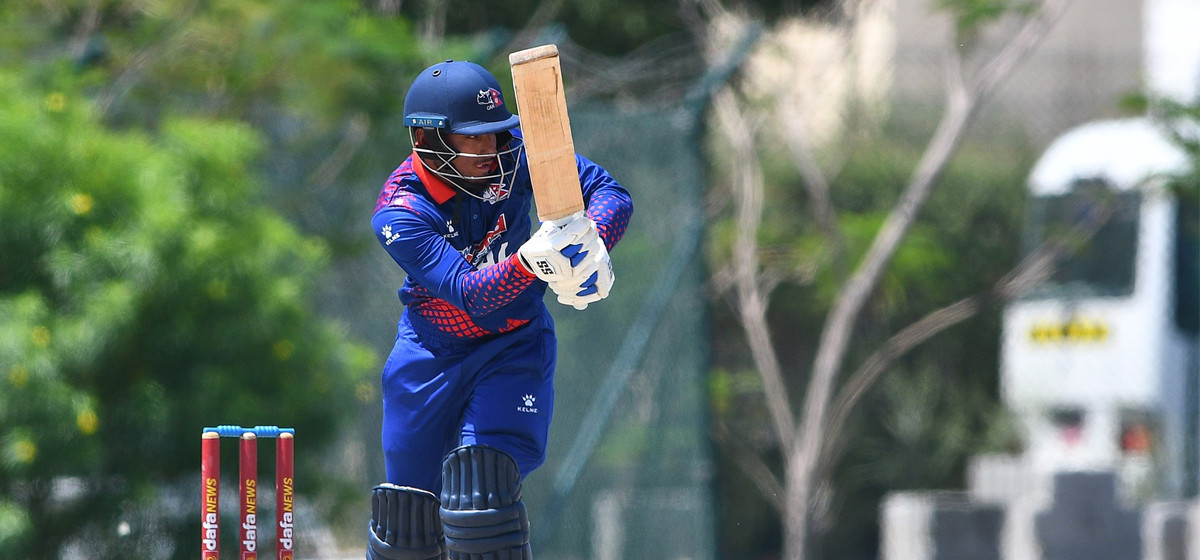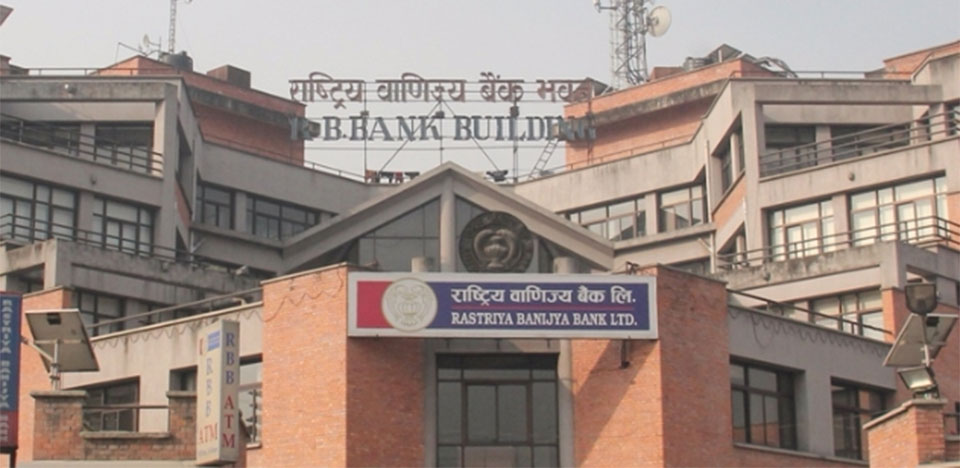
OR
cover story

Unreported lives
When Muna Shrestha came to Kathmandu for the first time after her SLC exams, she was fascinated to see her aunt driving a safa tempo. She wondered how it would feel to get behind the wheels of one. Little did she know that she would end up following her aunt’s footsteps just a couple of years down the line, after being unable to pursue a higher education but desperate to be able to provide for her family nonetheless. Here, with The Week’s Urza Acharya, she recounts the travails and triumphs of her journey so far.
Muna Shrestha is familiar with long, tiring commutes just like everyone else living in the valley. Her daily ride consists of multiple stops, incessant traffic jams, blaring horns, and occasional fights with those she shares her route with. But as a safa tempo driver, who begins her day at six in the morning, she has had to take it all in her stride and learn to live with it. After all, complaining about it like the rest of us tend to do will only make her job harder than it already is.
Shrestha, who was born in Dolakha, first came to Kathmandu after completing her SLC exams (now SEE) in 2008. Her aunt was a tempo driver and she used to roam around the city in her three-wheeler. Shrestha remembers being so fascinated by it that she often wondered how it would feel to be behind the steering wheel of one. However, she returned to her hometown to finish her plus two and that was that. But unfortunately, she couldn’t complete her studies and once again landed up in Kathmandu with her aunt two years later in 2010.
“I really didn’t have a plan in life. So with nothing else in mind, I decided to drive a tempo,” says Shrestha adding that she had to find a way of earning her keep in Kathmandu as it was an expensive city and she didn’t want to burden her aunt. So she had her aunt take her to JCI Nepal, an organization that trained women to drive tempos. The good thing was that the training was free. She recalls that you had to apply for the training and that the process consisted of filling out a form and a small test. When she received a call saying she had been selected for the training, Shrestha was over the moon. Following a 52-day training session, she sat for the written exam for a driving license and also passed the practical test.
The first day she was out on the road, with a tempo she had hired from a private company called Nevi, she was excited and nervous at the same time. The day went smoothly enough for her to feel confident that she could do this. But barely a week had passed when a microbus driver overtook her vehicle while shouting obscenities at her. “I was pretty shaken up that day. But it taught me to look out for myself as well as develop a thick skin,” she says.
26-year-old Shrestha, who has been driving a safa tempo for eight years, now has her own vehicle. She lives with her mother and younger sister in Baneshwor and is the sole breadwinner of the family. “When I used to drive a hired tempo, I would have to give a certain amount from my earnings each day and would only get to keep what remained. Sometimes, it wouldn’t be much,” she says adding that now though she is responsible for vehicle repairs and maintenance herself, her earnings have significantly improved. On good days, Shrestha makes around Rs 4000-5000. However, Shrestha claims that maintaining and reconditioning the safa tempo can be quite expensive. According to her, the batteries cost a lot and they need to be replaced almost every year. In addition to that, she also needs to shell out Rs 500 per day to have the batteries recharged.
The hardest blow came in March 2016 when the government enforced a ban on vehicles more than 20-years old. The ban was inclusive of safa tempos despite them being zero-emission vehicles. “When I heard about the ban, I was very scared because my tempo was already 18 years old and I couldn’t afford to buy another tempo,” says Shrestha adding that she and her fellow tempo drivers appealed to the Department of Transport Management and the Ministry of Environment to lift the ban or at least exempt safa tempos from it. Soon after, the government increased the time limit for safa tempo to 30 years and that now gives Shrestha 12 more years with her tempo. “Hopefully after 12 years, electric buses will be available in Nepal and I can transition from driving a tempo to driving a four-wheeler,” she says.
There are around 600 safa tempo drivers in Kathmandu out of which around half are women. Many of them, including Shrestha herself, are members of the Nepal Transport Workers Union that acts as a representative organization of transport and transport associated workers. According to Global Resource Institute, safa tempos were first introduced in Nepal in 1993. The GRI launched a three-year long program that introduced electric vehicles to help solve air pollution problems in cities of Nepal. As the program became highly successful, several other Nepali companies started manufacturing safa tempos and now they have become a much-preferred mode of public transport in the city. And Shrestha thanks her lucky stars that it’s been that way. Otherwise, she doesn’t know how she would have made her living and how life would have shaped out.
It is with this sense of gratitude that she works hard every single day. Her kohl-lined eyes are bloodshot by late afternoon but Shrestha makes it a point to push on for a couple of more hours till she calls it a day. Since she is her own boss, she has the freedom to choose her working hours but that freedom also comes with the responsibility to work hard and be disciplined. She confesses she will never go home just because she is tired. From making her way to the garage in New Baneshwor, where her safa tempo is kept overnight to have its batteries recharged to dropping it back there, Shrestha goes from dawn to dusk, often clocking in more than 13 hours.
Sometimes some passengers scold her when she doesn’t stop where they ask her to and some rush off without paying but these minor problems don’t dampen her spirits. Instead, Shrestha wraps her head with a large scarf day in and day out to block the dust as well as people’s stares and goes to work happy that she is able to sustain her family. Her hope is that someday she will graduate to driving buses or even government vehicles. For now, she is determined to work harder than ever and make the most of her days to steer her destiny in the direction she chooses.
acharyaurza8170@gmail.com

You May Like This

It’s a circus out there
Anyone who drives a car or rides a bike knows the frustrations of the road. Never mind the perpetual traffic... Read More...
Just In
- UAE secures spot in ACC Premier Cup final, defeating Nepal by six wickets
- NC to boycott Gandaki Province Assembly, submits letter to Speaker
- 850 grams of gold seized from Indian national at TIA
- Rupandehi District Court orders to release Dipesh Pun on a bail of Rs 400,000
- Teachers’ union challenges Education Minister Shrestha's policy on political affiliation
- Nepal sets target of 120 runs for UAE in ACC Premier Cup
- Discussion on resolution proposed by CPN-UML and Maoist Center begins in Koshi Provincial Assembly
- RBB invites applications for CEO, applications to be submitted within 21 days












_20240311121839.jpg)





Leave A Comment